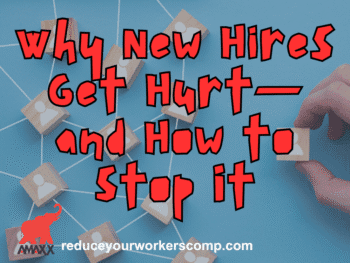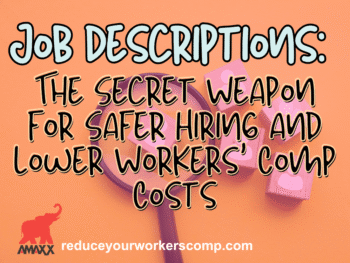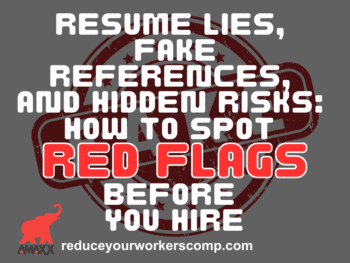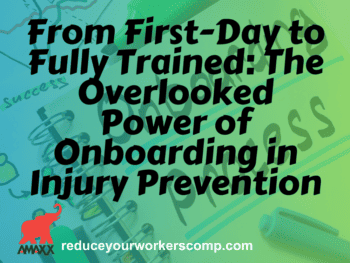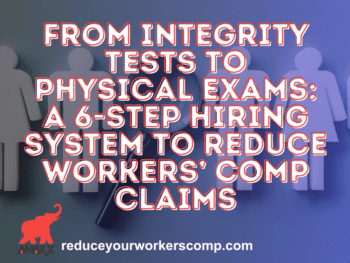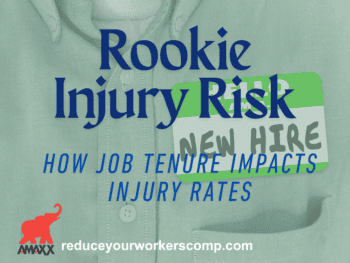
It All Starts with Communication
An effective safety program requires two-way communication between the employer and employees. This requires the following:
- Information needs to be shared with employees and feedback from employees on workplace safety hazards.
- All communication should be multilingual, if appropriate. This ensures that all employees receive the message in a language that is familiar to them. Suggested formats for effective multilingual communication should occur at all employee safety meetings (all shifts) and include messages about safety via posters, newsletters, and videos.
It is important to engage employees by having a “safety suggestion box,” where employees can report unsafe conditions, and help improve workplace conditions. Even anonymous suggestions should be taken seriously.
Click Link to Access Free PDF Download
“4-Step Sequence For Effective Employee Screening, Hiring, & Placement”
Conduct a Thorough Workplace Assessment
A review of safety in the workplace needs to be ongoing and continual. When conducting an initial workplace safety audit, it is important to review the entire workplace and understand current trends. It must involve managers and their employees who are called upon to analyze all worksite conditions to identify, and eliminate existing or potential hazards. In some instances, employers may be required to have a safety committee. The committee should be chaired by someone who can effectuate change and is comfortable speaking to people in all levels of an organization.
A proper workplace safety assessment should evaluate the following issues:
- Review and understand the workplace for safety and health regulations;
- Recognize safe work practices, physical hazards, and use of any hazardous materials with the workplace. Ensure these safety issues are clearly identified and correct postings from OSHA are displayed; and
- Make sure all employees, regardless of job title practice safety. When employees see upper management is serious about safety, they take note.
The process also needs to be ongoing. This should include a monthly review of all safety features within the workplace. Be sure to make sure facility ingress and egress are clearly marked, first-aid kits are properly stocked, and fire extinguishers are properly maintained.
Hazard Correction/Safety Work Order Tracking System
It is important to have a process in place to track safety issues and document corrective action. This is an easy process to implement if used correctly and completely.
- Involve employees in this process – their knowledge of the jobs and tasks will ensure a quality assessment and will help get “buy-in.” Plant maintenance employees are a great source for recognizing hazards.
- IMMEDIATELY correct hazards that are found. Do not wait for the audit to be done. Develop corrective actions plans whenever needed.
- Develop a system for employees to report hazards.
- Review loss history to look for trends. “Near misses,” in which an accident did not occur, but could have, can give a good indication of inadequate hazard control.
- Let employees help develop ideas on how to control and eliminate hazards in their surroundings.
- Provide Personal Protective Equipment (PPE), when needed, and train employees on how to use it. Consult OSHA regulations for specific requirements. In some instances, OSHA representative can assist in training employees and ensure compliance.
- Safety audits should be supplemented with safety inspections. Inspections can be informal or formal, using a checklist. Continuous inspections are performed by employees or supervisors as part of their daily routine. Planned inspections take place periodically (weekly, monthly, or semi-annually) and are usually limited in scope, or specific to a site. Intermittent inspections take place on an irregular basis and are usually not scheduled.
Conclusions
An effective workers’ compensation program starts with injury prevention and safety. Interested stakeholders need to be mindful of these issues and communicate safety messages to all employees in an effective manner. Safety should also include the involvement of all employees and a commitment to constant review and maintenance.

Contact: mstack@reduceyourworkerscomp.com.
Workers’ Comp Roundup Blog: https://blog.reduceyourworkerscomp.com/
©2019 Amaxx LLC. All rights reserved under International Copyright Law.
Do not use this information without independent verification. All state laws vary. You should consult with your insurance broker, attorney, or qualified professional.




